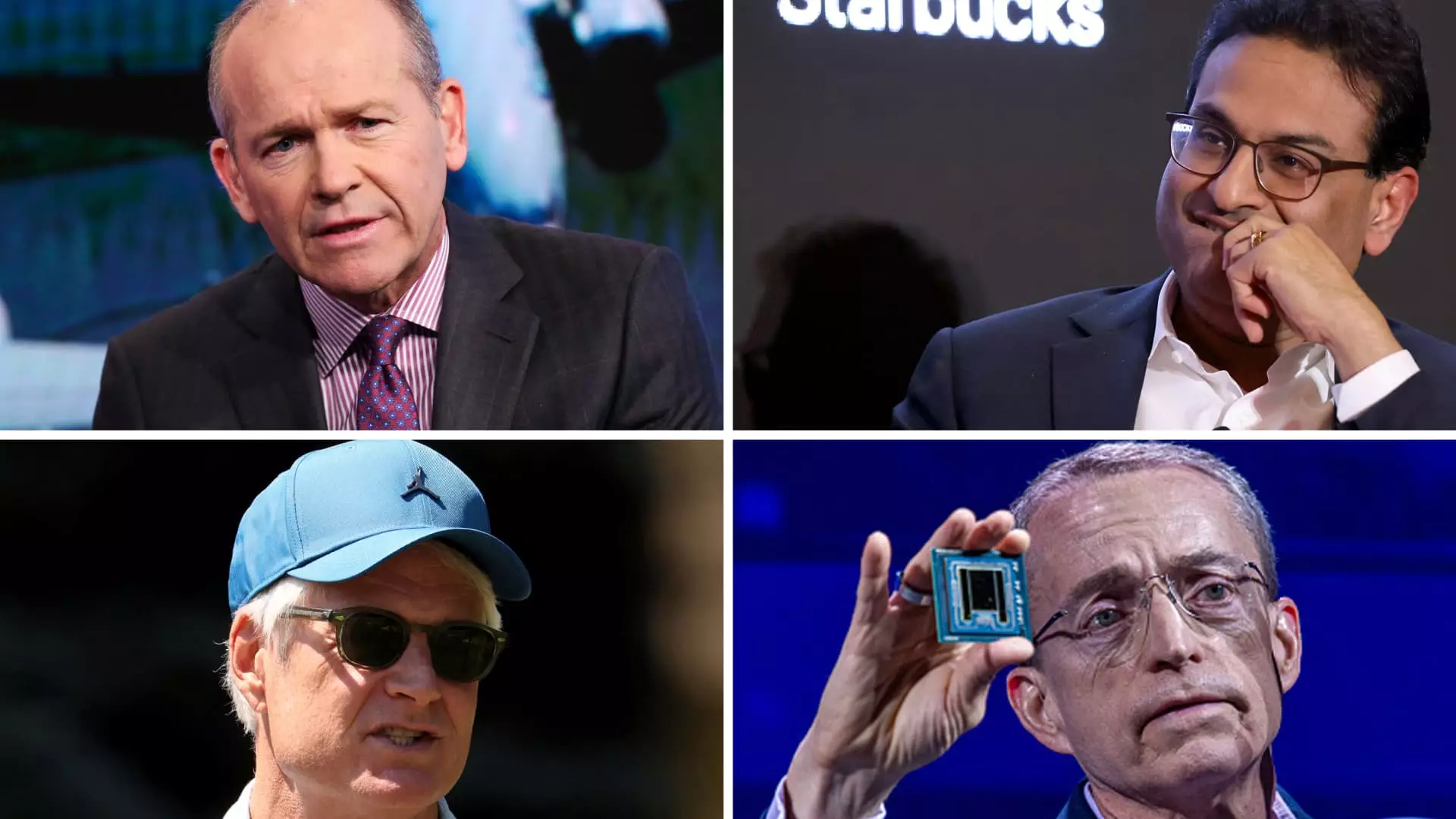2023 has marked an unprecedented year for chief executive officer (CEO) turnover in U.S. public companies, with 327 changes reported by Challenger, Gray & Christmas—a record since the firm began tracking this data over a decade ago. This significant shift indicates a broader trend of increasing volatility in corporate leadership, revealing an evolving landscape where companies grapple with changing consumer expectations and market dynamics. The turnover is not merely routine; it reflects deeper issues within major corporations and the growing impatience among stakeholders, from investors to consumers.
In an era characterized by economic resilience, where consumer spending remains robust, the scrutiny of executive performance has intensified. Companies traditionally viewed as industry stalwarts—such as Boeing, Nike, and Starbucks—are feeling the effects of declining sales and strategic missteps more acutely than ever before. The demand for immediate results and accountability from CEOs has catalyzed a wave of departures, suggesting that a merely competent performance is not sufficient in today’s aggressive market.
The turbulence experienced during the COVID-19 pandemic laid the groundwork for the current wave of CEO departures. The pandemic forced companies to adapt swiftly to unprecedented challenges, from supply chain disruptions to shifting consumer habits. During this tumultuous period, CEO turnover slowed as businesses concentrated on survival strategies, often rallying behind their existing leadership teams. However, as the economy began to stabilize, market participants became less forgiving, questioning the capabilities of CEOs to navigate ongoing complexities.
Industry experts, like Clarke Murphy of Russell Reynolds Associates, highlight that the cost of capital and the pace of transformation are central factors driving this accelerated turnover. In a marketplace marked by significant annual growth, poor-performing companies have found themselves in the spotlight, with corporate boards responding more decisively to the inadequacy of their leaders. In this environment, performance metrics are under constant scrutiny, intensifying the pressure on CEOs to deliver compelling results.
Interestingly, the trend of higher CEO turnover is especially pronounced within consumer-focused sectors, which are more prone to rapid shifts in consumer preferences. Companies in the oil and gas or utilities sectors typically see longer tenures due to their more stable markets and established customer bases. However, the fast-paced evolution of consumer tastes means that organizations like Starbucks and Nike face constant pressure to remain relevant. As evidenced by Starbucks’ decision to hire Chipotle’s Brian Niccol, the industry is increasingly willing to pursue dramatic leadership changes when results falter.
Moreover, recent departures seem to be strategically motivated, indicating a trend where companies actively seek fresh leadership to rejuvenate their brands and realign their strategies with current market realities. For instance, after years of struggling with its stock performance, Starbucks’ decision to appoint Niccol highlights a growing recognition of the need for innovative leadership in the pursuit of brand revival and customer engagement.
The implications of this rising turnover trend stretch beyond individual companies. The continually shifting executive landscape signals a transformation in how businesses operate and adapt to market pressures. Consumers and investors alike are demanding not only accountability but also visionary leadership that can pivot efficiently in response to emerging challenges.
Take Boeing, for example. Following a safety crisis and numerous leadership changes, the firm exemplifies the cascading effects of poor performance. The company’s recent appointments aim to restore confidence among stakeholders, aiding the aerospace giant in overcoming its reputational and operational hurdles.
Additionally, Peloton’s changing tides reflect the dire consequences of failing to innovate and meet market expectations. After a series of leadership shifts and strategic pivots, Wall Street remains cautiously optimistic about new leadership that emphasizes profitability over mere expansions in services.
As 2023 wraps up, the pattern of heightened CEO turnover is a critical marker of a changing corporate landscape. The surge speaks volumes about the increasing demands placed on executives to demonstrate agility, innovation, and responsiveness, especially within competitive markets. Stakeholders are invoking a new standard of accountability; complacency is obsolete in an era where consumer preferences can shift overnight.
The ongoing evolution of corporate leadership will likely continue to challenge board members and stakeholders as they seek to align their organizations with dynamic market realities. For current and aspiring CEOs, understanding this expansive context is crucial for not only surviving but thriving in today’s business environment. As these trends unfold, companies will need to foster cultures that embrace adaptability, resilience, and above all, visionary leadership that anticipates change rather than merely reacting to it.

